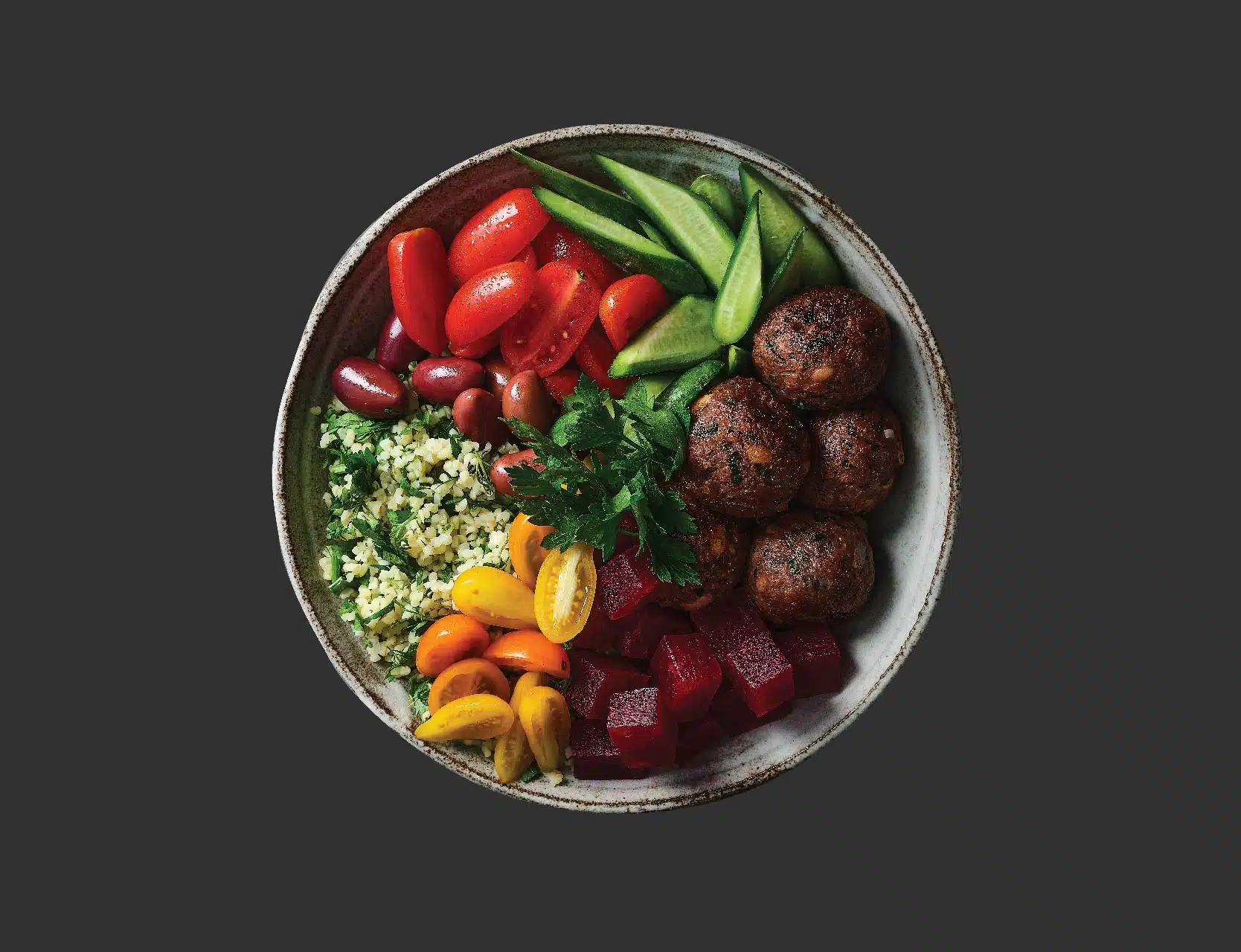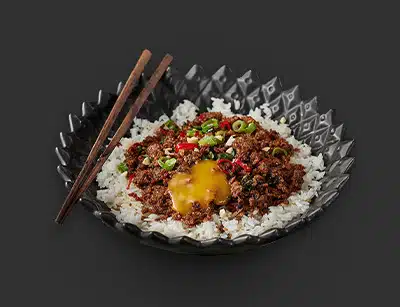
Why Meat Tastes So Good: The Power of the Five Senses
Meat is one of the most complex food substances we know. When cooked, the combination of fat, sugar and protein produces thousands of unique volatile aromatic compounds, and also results in the brown color and rich flavors of the Maillard Reaction. Regardless of our age or background, we are drawn to the juiciness, tenderness, mouthfeel and fibrousness of meat.
“wow, it tastes just like beef”
At Redefine Meat, hearing customers say “wow, it tastes just like beef!!” or “I didn’t realize this was plant-based” is music to our ears. Creating an alternative to meat (we call it “new-meat”) that is both a sustainable protein and would pass the meat lover’s test is absolutely core to what we’re about.
So, why does meat taste so good?
To understand why meat tastes so good, it’s helpful to learn about the different flavor profiles of each cut in the meat diagram. We work very hard to replicate not just a generalized concept of animal meat, but the specific attributes that give each cut of meat its distinct texture, mouthfeel, and flavor.
So it stands to reason that when we develop our plant-based meat products, we look to bring the full meat experience to diners and home users by engaging every single one of our five senses: sight, smell, taste, touch, and, yes, even, sound. In this blog, we’re excited to unpack the Redefine Meat “5 Senses Experience”.

Meat’s 5 senses: how to taste meat?
#1 Sight: “The all important first impression…”

Our first interaction with food is through our eyes. We say things like “that looks delicious,” as if our eyes had taste buds as well as pupils! When it comes to meat alternatives, nailing the visual presentation is an art form, especially when it comes to whole cuts. We invest huge resources in replicating raw beef’s vibrant red and white marbling, and grilled steak’s golden-brown crust and pale pink center.
How do we achieve this? Using plant-based ingredients and natural colors (e.g. beet for blood), advanced tissue layering technology, and endless conversations with top chefs and butchers that ensure our products catch the eye and entice the appetite.
#2 Smell: “The vital prelude to taste…”

Meat’s distinct flavor derives from the complex interplay of taste and smell. The aroma of grilled meat hits our nostrils seconds before encountering our taste buds. Because our olfactory system is directly wired to areas of our brain responsible for emotion and memory, food aroma can be highly evocative, significantly influencing the overall eating experience. For meat alternatives, capturing the savory, meaty smell of cooking meat is paramount.
Our team works meticulously to identify and replicate these volatile compounds and aromatic molecules released during cooking or grilling. We conduct extensive aroma profiling to analyze and perfect the scent of our products. Sensory panels play a crucial role here, providing feedback on whether the aroma hits the right notes.
#3 Taste: “The gateway to eating pleasure…”

The rich, complex, savory taste of meat is one of the reasons we love it so much. Physiologically speaking, this taste is experienced through the interaction of the taste buds on the tongue with chemical compounds in food, leading to the recognition of sweet, salty, sour, bitter, and umami. Taste is amplified by aroma, mouthfeel and visual appearance.
What we taste varies according to the type and the cut. Lamb has a more intense gamey quality compared to beef’s sweeter profile. Since taste is highly subjective, we rely on ongoing sensory panels to evaluate every flavor dimension of our plant-based new meat products. From the initial bite to the lingering aftertaste, we strive to ensure our products deliver a taste experience that comes as close as possible to the symphony of meaty flavors.
#4 Touch: “Texture and mouthfeel…”

Meat can feel juicy, tender, buttery or flaky and chewy – depending on the cut or cooking method. Producing authentic meaty texture and mouthfeel involves first understanding the structural properties of muscle fibers, connective tissue, and fat in traditional meat, then replicating them. This is what allows us to create textures ranging from a steak’s tenderness to pulled pork’s fibrousness.
Mixing different plant proteins is key to mimicking meat’s fibrous texture. Each protein type –pork, beef or lamb– brings something special to the table, helping us get that perfect meaty feel we’re after. Hydration and binding agents play a key role in keeping everything moist and sticking those proteins together; this is very important for getting the structure of meat (or in this case, new-meat) just right. Additive manufacturing cleverly aligns proteins to mimic muscle fibers, while plant-based oils are used to create fat emulsions that bring out that juicy, fatty mouthfeel just like marbling or a fat cap in beef.
#5 Sound: “The overlooked sense…”

The sizzle of a steak on the grill, the crunch of a well-seared crust, and even the sound of biting into a juicy burger contribute to the overall enjoyment of eating. At Redefine Meat, we pay close attention to these auditory cues and work to replicate them in our products. This involves not only creating the right textures but also ensuring that our cooking instructions and methods yield the desired sounds. Sensory panels provide feedback on these auditory aspects, helping us refine our products to ensure they sound as good as they taste.
Redefining the new meat experience by engaging all 5 senses
Don’t get me wrong, I like pan-fried salmon or a vegetable curry, but nothing comes close to the all-round 5 senses enjoyment of a juicy burger or succulent steak. It’s what makes meat so amazing. Our mission is to recreate this experience, by creating new meat that tastes, smells, feels, looks, and sounds like traditional meat. With one major difference: a healthier impact on the planet. Don’t take our word for it, experience it for yourselves: here’s where to find new-meat near you!





